Nine-Headed Bird: Mythical Creature Worshiped In Ancient China
A. Sutherland – MessageToEagle.com – One of the earliest forms of the Chinese Phoenix is the nine-headed bird (“Jiu Feng”), a monster in Chinese mythology.
The creature – with a bird’s body and nine heads with human faces – was worshiped by ancient natives in Hubei Province (part of the kingdom of Chu during the Warring State Period (475 – 221 BC). The nine-headed bird (also called “Nine Phoenix“) was viewed as a totem in the kingdom of Chu during the period of 475 BC to 221 BC.
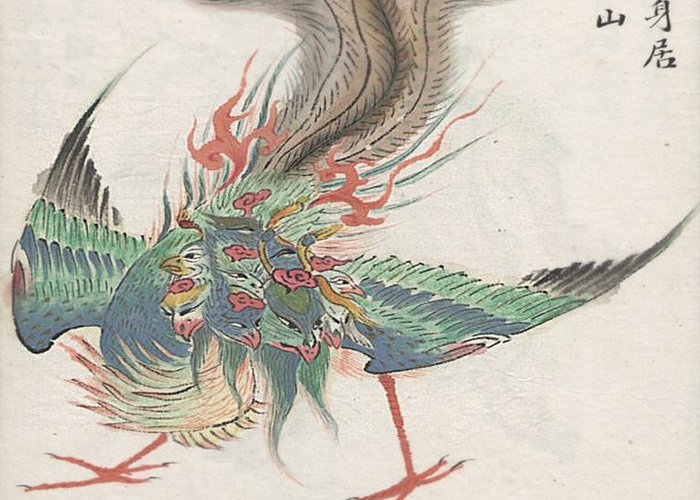
The royal family of Chu is considered descendants from the Yellow Emperor, a deity in Chinese religion, one of the legendary Chinese sovereigns and culture heroes, credited with invention of Chinese medicine, religious practices, including worship of the sun, moon, and five planets; and technological inventions, like the compass and calendar.
“Nine Phoenix” was one of the most commonly worshiped mythical and divine creatures (another one was the Chinese dragon) in Chinese history and is mentioned in the Classic of Mountains and Seas (Shanhai jing) dated to the 4th century BC.
According to ancient beliefs, the nine-headed bird is a rare creature because it has nine brains and is very intelligent. It has also the ability to foresee the future.
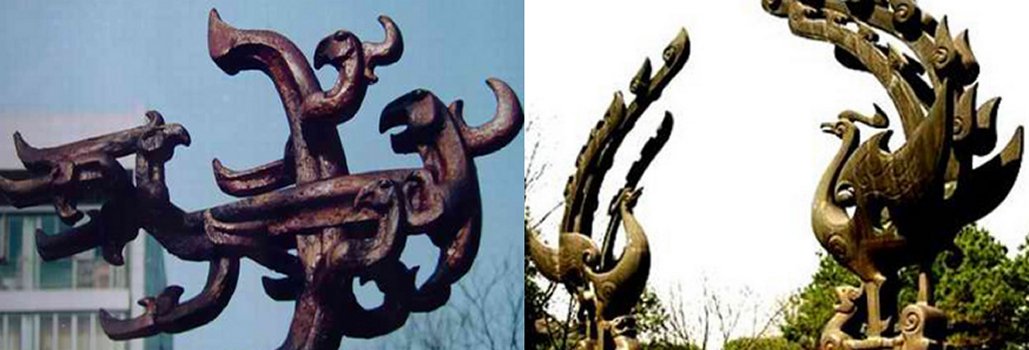
People in China use to say that someone is as intelligent as the ‘nine headed bird’; on the other hand, this term may have a negative and insulting meaning because it characterizes a person as cunning, unscrupulous and treacherous.
Later, during the Han Dynasty (202BC~220), the bird was often described as a monster, a creature of ill omen and often considered as a demon in Chinese myths and legends.
One legend has it that the Nine-headed bird – a terrifying creature and the arch nemesis of the hero – used to causes great suffering by kidnapping young girls and letting them die of hunger in its lair. Finally, the a hero managed to kill the monster bird with the help of a kidnapped princess.
The number ‘nine’ was long believed to possess mysterious power in Chinese culture and remains a lucky number in China. Despite some ancient legends and myths, even the legendary nine-headed bird is believed to be a symbol of wisdom and good fortune.
Written by – A. Sutherland – MessageToEagle.com Senior Staff Writer
Copyright © MessageToEagle.com All rights reserved. This material may not be published, broadcast, rewritten or redistributed in whole or part without the express written permission of MessageToEagle.com
Expand for referencesReferences:
Choy Lee, Pioneers of Modern China: Understanding the Inscrutable Chinese
Christine Mollier, Buddhism and Taoism Face to Face: Scripture, Ritual, and Iconographic …
Related Posts
-
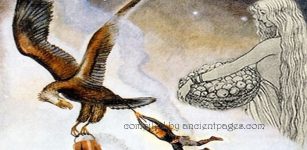 Abduction Of Idun, Goddess-Keeper Of Golden Juvenile Apples In Norse Mythology
No Comments | Nov 17, 2019
Abduction Of Idun, Goddess-Keeper Of Golden Juvenile Apples In Norse Mythology
No Comments | Nov 17, 2019 -
 The Ruins Of Pennard Castle And The Tale Of Faeries’ Curse
No Comments | Mar 2, 2016
The Ruins Of Pennard Castle And The Tale Of Faeries’ Curse
No Comments | Mar 2, 2016 -
 Lost Technology Of The Ancients – The Crystal Sun
No Comments | Mar 15, 2020
Lost Technology Of The Ancients – The Crystal Sun
No Comments | Mar 15, 2020 -
 Pristimantis Mutabilis: Shape-Shifting Frog In The Ecuadorian Cloud Forest
No Comments | Feb 20, 2016
Pristimantis Mutabilis: Shape-Shifting Frog In The Ecuadorian Cloud Forest
No Comments | Feb 20, 2016 -
 World’s Oldest Moon Map Carved Into Ireland’s 5,000 Year-Old Tomb At Knowth
No Comments | Jun 25, 2014
World’s Oldest Moon Map Carved Into Ireland’s 5,000 Year-Old Tomb At Knowth
No Comments | Jun 25, 2014 -
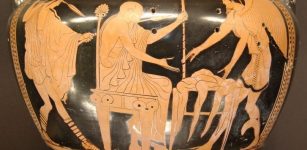 Prophet King Phineus Revealed The Future To Humans And Unleashed God Zeus’ Fury
No Comments | Nov 21, 2019
Prophet King Phineus Revealed The Future To Humans And Unleashed God Zeus’ Fury
No Comments | Nov 21, 2019 -
 Superposition Phenomenon – Can You Be In Two Places At Once?
No Comments | Jul 19, 2016
Superposition Phenomenon – Can You Be In Two Places At Once?
No Comments | Jul 19, 2016 -
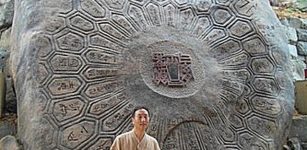 Giant Turtle-Shaped Rock Wangsan, Korea – One Of The Strongest Sources Of “ki”
No Comments | Jun 24, 2015
Giant Turtle-Shaped Rock Wangsan, Korea – One Of The Strongest Sources Of “ki”
No Comments | Jun 24, 2015 -
 Boss Great Wall: Gigantic Wall Of Galaxies Located In Deep Space
No Comments | Sep 21, 2016
Boss Great Wall: Gigantic Wall Of Galaxies Located In Deep Space
No Comments | Sep 21, 2016 -
 Heatwave: Think It’s Hot In Europe? The Human Body Is Already Close To Thermal Limits Elsewhere
No Comments | Jul 30, 2019
Heatwave: Think It’s Hot In Europe? The Human Body Is Already Close To Thermal Limits Elsewhere
No Comments | Jul 30, 2019
